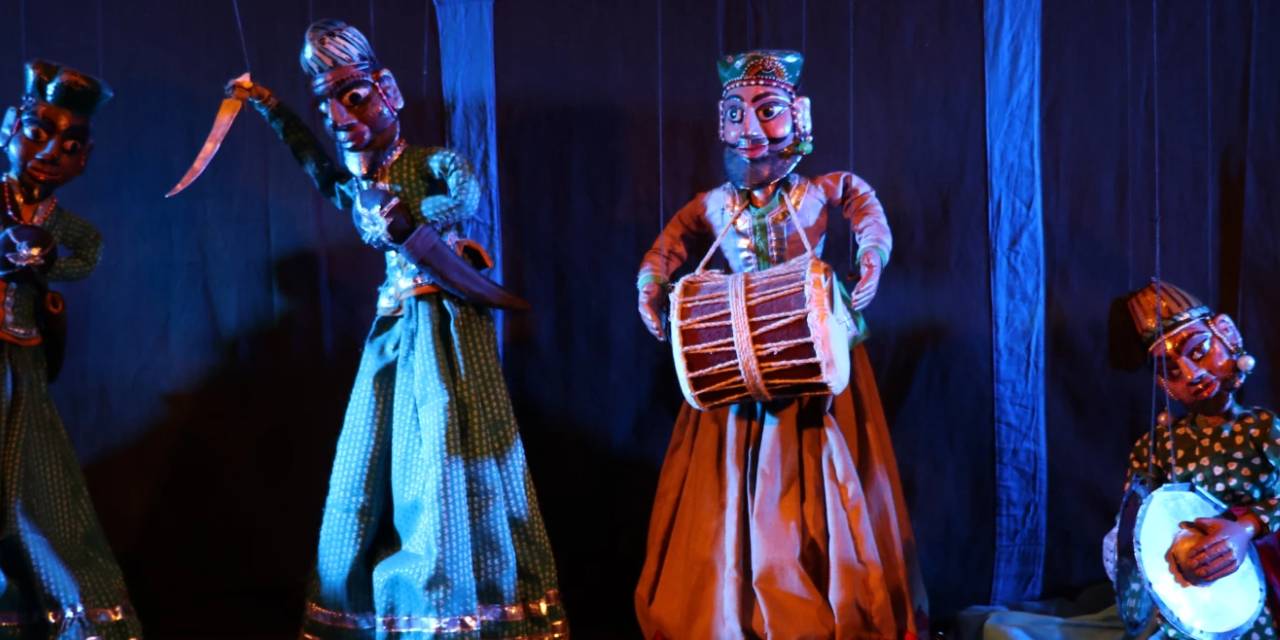
Museum Fees :- INR 60 for Indian, INR 120 for Foreigners
Timing :- 9:00 am – 5:30 pm
Puppet and Folk Dance Fees :- INR 120 for Indian, INR 180 for Foreigners
Timing :- 12 PM - 1 PM , 6 PM - 7 PM and
7:15 PM- 8:15 PM
Year of Establishment :- 1952
Address :- Saheli Marg, Madhuban,, Udaipur, Rajasthan, 313001, India
Overview
Bharatiya Lok Kala Mandal is a cultural institution based in Udaipur in Rajasthan state in India engaged in studying folk art, culture, songs and festivals of Rajasthan, Gujarat and Madhya Pradesh and to popularise and propagate folk arts, folk dances and folk literature.
It was founded by Padam Shri Late Devi Lal Samar in the year 1952. The institution has a museum that exhibits collection of folk articles from Rajasthan like rural-dresses, ornaments, puppets, masks, dolls, folk musical instruments, folk deities and paintings. There is puppet theater (Kathputli) too where puppet shows are held at regular intervals.
Bhartiya Lok Kala Mandal Legacy
The Mewar region is synonymous with Rajasthan's and India's cultural heritage. Mewar's centuries long rich legacy of the performing arts (storytelling, folk songs, dance, and puppetry) and handicrafts has enthralled locals and captivated tourists. It was with the vision of keeping these traditions alive that Mr Devi Lal Samar founded Bhartiya Lok Kala Mandal (BLKM) in Udaipur in 1952. His mission was singular - to preserve and promote this rich cultural heritage. Mr Devi Lal authored several books on Rajasthan's culture, theatre, and arts and organised India's first ever puppet festival. The Government of India awarded Mr Devi Lal the Padma Shri for his lifetime achievements.
What's Inside
Bhartiya Lok Kala Museum:- Bhartiya Lok Kala Museum offers visitors a unique and curated range of traditional artefacts, jewellery, ornaments, costumes, folk musical instruments, masks, miniature paintings, icons of local deities, a history of Mewari turbans, antiques, and crafts carefully collected over a period of 65 years. The museum has an exhibit of a rare collection of different puppets from various parts of India and abroad such as France, Germany, Russia, America, Mexico, Indonesia and Romania, including water puppets from Vietnam. Tribal dance forms portrayed in the museum, such as Terah Taal, Taal, Bhawai, the Gavari folk dance of Bhil tribes, Ram Leela, and Ras Leela, provide a great source of knowledge about folk and tribal culture.
Govind Puppet Theatre:- Govind Puppet theatre conducts daily puppetry and folk dance shows for visitors in a unique, symbolic, and colourful manner. The shows are presented by traditional artists who are adept in the art of puppetry and folk dance and successfully manage to enthral the viewers. Some of the puppetry-based plays performed in the centre includes Sinhasan Battisi (presented in its current form of Rajasthani style) Ram Leela, and Rass Leela among others. Inaugurated in 1985 by the then Honourable President of India, Giani Zail Singhji, this theatre is located adjacent to the museum. It is the outcome of extensive research conducted over the years to bring the puppetry art to the forefront.
Training and Development:- BLKM offers regular training in puppetry to educate children, teachers, and other enthusiasts in this unique art form. Training on folk dances is also conducted at the centre regularly. In addition, BLKM trains young persons, especially women, in folk and tribal dances and music to keep these art forms alive. These endeavours help the centre in preserving the art form of puppetry for the future generations.
Research and Documentary Centre:- The centre provides research, documentation, and publication facilities to popularize traditional folk art and culture in collaboration with scholars, students, artists, local communities, academicians, and other like-minded people. The centre’s archive section is a direct outcome of the extensive cultural survey, research, and documentation conducted by BLKM across the country over the years. Not only does it assist in research work, but it also adds value to cultural preservation. In the past, researchers from different parts of the world such as Japan, the USA, South Korea, and European countries have visited BLKM for their work.
